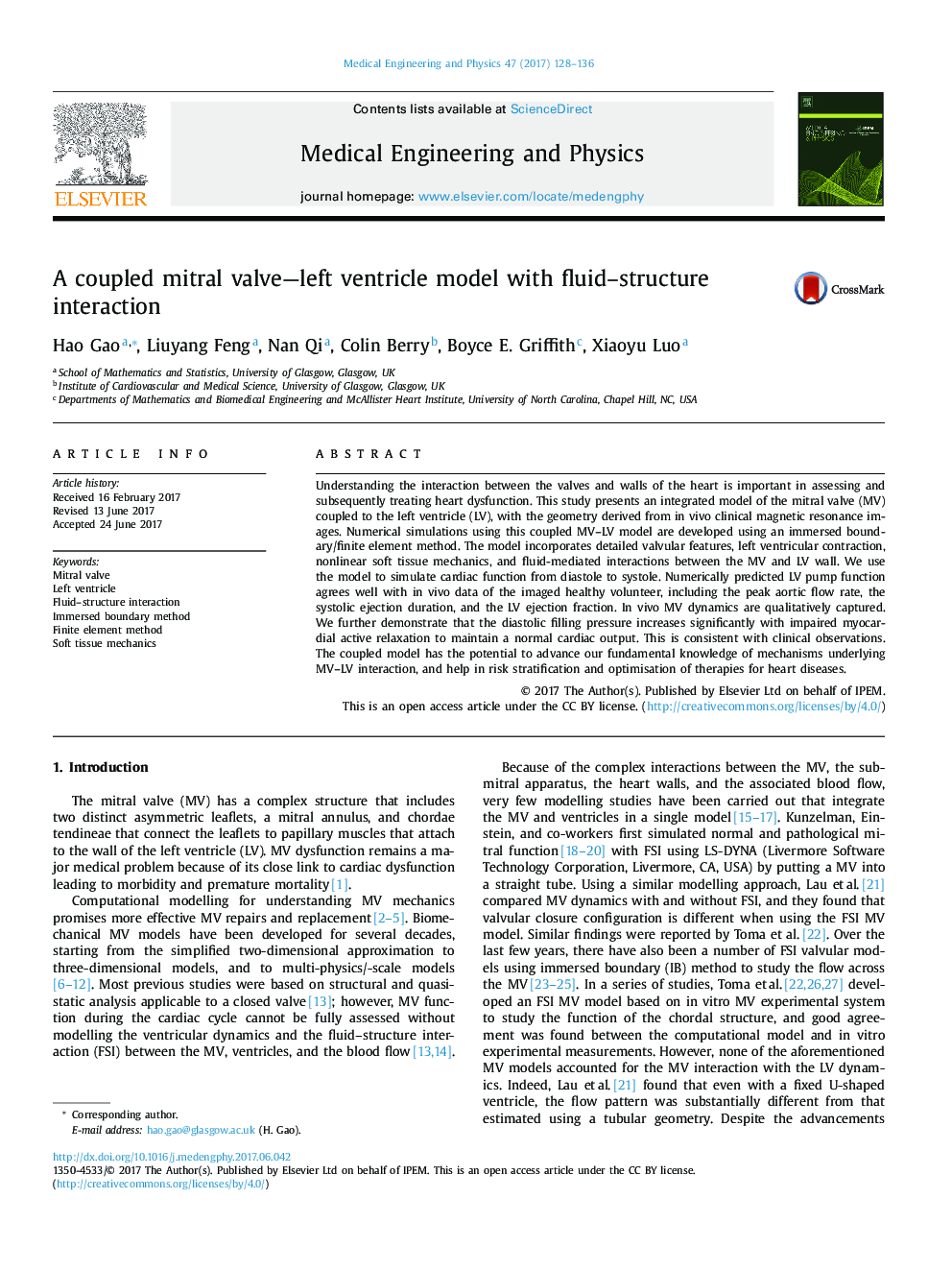| کد مقاله | کد نشریه | سال انتشار | مقاله انگلیسی | نسخه تمام متن |
|---|---|---|---|---|
| 5032645 | 1471127 | 2017 | 9 صفحه PDF | دانلود رایگان |
- We present a first fully coupled mitral valve - left ventricle model that includes fluid-structure interaction along with experimentally constrained descriptions of the soft tissue mechanics. The model is implemented using an immersed boundary method with finite element elasticity.
- The model is derived from in vivo magnetic resonance imaging data, and is used to simulate MV dynamics, LV wall motion, and ventricular flow. Myocardial active contraction is also modelled in systolic ejection.
- Most of the modelling results agree with in vivo measurements. Using this model, we quantitatively show that with impaired myocardial active relaxation, the diastolic filling pressure needs to increase substantially to maintain a normal cardiac output, which is consistent with clinical observations.
- Although the numerical method has been applied to individual LV models and MV models, a coupled MV-LV model is in need to demonstrate the potential to enable whole-heart simulation by including valvular dynamics, blood flow, ventricular contraction, electrophysiology, and their interactions. This study thereby represents a further step towards a whole-heart multiphysics modelling.
Understanding the interaction between the valves and walls of the heart is important in assessing and subsequently treating heart dysfunction. This study presents an integrated model of the mitral valve (MV) coupled to the left ventricle (LV), with the geometry derived from in vivo clinical magnetic resonance images. Numerical simulations using this coupled MV-LV model are developed using an immersed boundary/finite element method. The model incorporates detailed valvular features, left ventricular contraction, nonlinear soft tissue mechanics, and fluid-mediated interactions between the MV and LV wall. We use the model to simulate cardiac function from diastole to systole. Numerically predicted LV pump function agrees well with in vivo data of the imaged healthy volunteer, including the peak aortic flow rate, the systolic ejection duration, and the LV ejection fraction. In vivo MV dynamics are qualitatively captured. We further demonstrate that the diastolic filling pressure increases significantly with impaired myocardial active relaxation to maintain a normal cardiac output. This is consistent with clinical observations. The coupled model has the potential to advance our fundamental knowledge of mechanisms underlying MV-LV interaction, and help in risk stratification and optimisation of therapies for heart diseases.
Journal: Medical Engineering & Physics - Volume 47, September 2017, Pages 128-136
